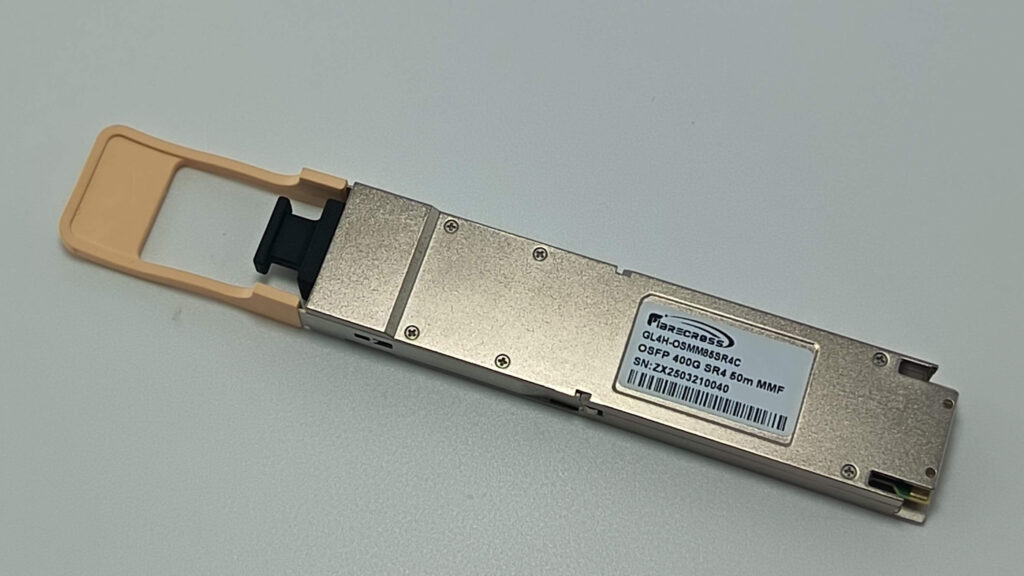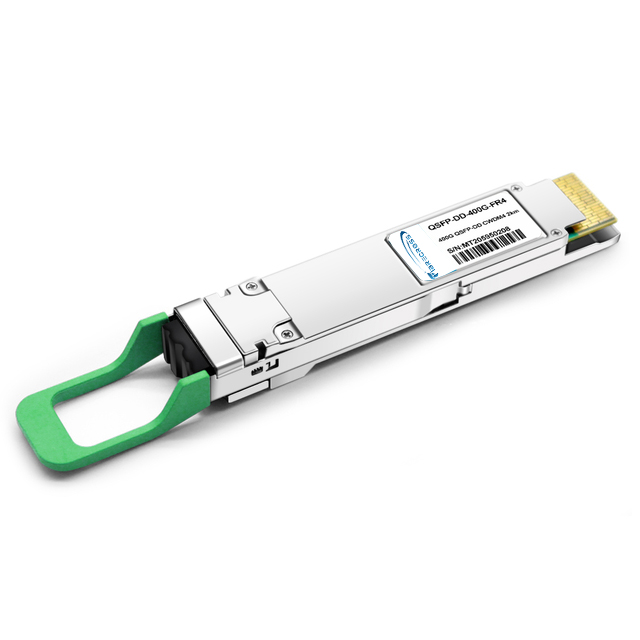Precision Optical Transceivers: The Backbone of Modern High-Speed Networks
In an era driven by constant technological advancements, businesses, data centers, and telecommunications rely on increasingly faster, more efficient networks. With the surge in demand for high-speed internet, cloud computing, 5G, and real-time communication, the importance of robust data transmission has never been more critical. Optical transceivers have evolved to meet these demands, with innovations like 400G and 800G optical transceivers leading the way in network performance. One of the most significant shifts in modern networking is the transition to pluggable optical transceivers, which offer unmatched flexibility and ease of upgrade. In this blog, we’ll explore the key role of precision optical transceivers and how they support the backbone of today’s fast-paced digital world.
What Are Transceivers? A Vital Component in Data Transmission
Before diving into their advanced forms, it’s important to understand what an optical transceiver is and why it’s crucial to modern networks. At its core, an optical transceiver is a device used to transmit and receive data via optical fiber. These devices convert electrical signals into light signals for transmission over fiber optics and convert light back to electrical signals at the receiving end. Without optical transceivers, we wouldn’t have the high-speed internet, global communications, or cloud-based services we rely on daily.
The versatility and speed of optical transceivers make them indispensable in large-scale networks. Their ability to carry high bandwidth signals over long distances with minimal loss makes them ideal for connecting servers, switches, and routers in data centers, telecom networks, and enterprise infrastructures.
The Evolution to 400G and 800G Optical Transceivers
Historically, networks were built using optical transceivers that supported speeds like 10G, 25G, and 100G. However, as data traffic continues to increase exponentially with the rise of cloud applications, 4K/8K video streaming, AI, IoT, and big data, the need for faster and more capable transceivers became inevitable.
The introduction of 400G optical transceivers marked a significant milestone in the networking industry, offering four times the bandwidth of 100G transceivers. This enabled data centers and telecom operators to meet the growing demands of high-bandwidth applications, from cloud storage to high-performance computing. As the world moves toward ultra-high-definition media and the next generation of AI applications, the demand for even faster and more reliable connections is driving the development of 800G optical transceivers.
An 800G optical transceiver is designed to handle the exponential growth of data and ensure low-latency, high-throughput connectivity. These transceivers can handle an immense amount of data without compromising on signal integrity, ensuring businesses can scale their operations and stay competitive in a world where data is the lifeblood of innovation.
Pluggable Optical Transceivers: Flexibility Meets Efficiency
One of the most significant innovations in the world of optical transceivers is the development of pluggable optical transceivers. These modular devices can be easily inserted or removed from a network equipment port, providing operators with unparalleled flexibility. Instead of being permanently integrated into equipment, pluggable transceivers allow operators to swap out transceivers as needed, making network upgrades and maintenance far easier and more cost-effective.
This modularity is especially advantageous in high-performance networks like data centers, where scaling bandwidth and updating hardware is an ongoing requirement. With pluggable transceivers, businesses no longer have to replace entire systems to upgrade their network’s capabilities. Instead, they can simply swap out lower-speed transceivers for higher-speed versions (like 400G or 800G optical transceivers), improving network performance while reducing operational disruption and downtime.
Precision in Optical Transceivers: The Importance of Signal Integrity
While the speed and bandwidth of 400G and 800G optical transceivers are impressive, the precision of these devices is what truly sets them apart. Maintaining signal integrity during long-distance transmission is one of the greatest challenges in optical networking. A precision optical transceiver ensures that light signals are transmitted with minimal distortion, reducing the likelihood of data loss, latency, or jitter.
In real-world scenarios, businesses cannot afford to experience network downtime or slow speeds, as even a small amount of data loss can result in significant setbacks. Whether it’s a financial transaction, a video conference, or a large-scale cloud application, precision optical transceivers help maintain the quality and reliability of these services by ensuring that data arrives at its destination accurately and without interference.
Real-World Applications of High-Speed Optical Transceivers
High-speed optical transceivers, are essential in numerous industries where large-scale data processing and fast, reliable communication are critical. Below are some of the key real-world applications, outlined in a table format for clarity:
| Industry | Application | Benefits of High-Speed Optical Transceivers |
|---|---|---|
| Telecommunications | 5G Network Backbone | High-speed optical transceivers enable telecom providers to handle the large data volume and bandwidth requirements of 5G networks. |
| Network Upgrades | 400G and 800G transceivers provide flexible scalability, reducing the need for costly infrastructure replacements. | |
| Cloud Data Centers | Data Traffic Management | High-speed transceivers enhance data throughput, supporting cloud-based applications and services at scale. |
| Interconnecting Data Centers | 400G optical transceivers ensure low-latency, high-throughput interconnects between geographically dispersed data centers. | |
| High-Performance Computing (HPC) | Research and Simulations | 800G optical transceivers provide the necessary bandwidth for handling massive datasets used in scientific research and simulations. |
| Real-Time Data Processing | Precision optical transceivers ensure low latency for high-frequency trading, complex modeling, and analytics. | |
| Financial Institutions | Low-Latency Data Transmission | Precision transceivers enable real-time data exchange for financial transactions, reducing delays in high-frequency trading. |
| Global Market Connectivity | 400G optical transceivers allow for fast and reliable communication between financial hubs worldwide. | |
| Smart Cities | IoT Connectivity | High-speed optical transceivers support the vast network of sensors and devices in smart city infrastructures. |
| Surveillance and Traffic Management | 400G and 800G transceivers enable seamless data transmission for real-time traffic monitoring and public safety systems. | |
| Media & Entertainment | 4K/8K Video Streaming | Optical transceivers with high bandwidth capabilities support the streaming of ultra-high-definition content, reducing buffering and latency. |
| Live Broadcasting | High-speed connections ensure smooth, real-time delivery of live broadcasts and media content worldwide. |

The Future of Optical Transceivers: Enabling the Next Wave of Innovation
As the digital landscape continues to evolve, the need for faster, more reliable networks will only grow. 400G and 800G optical transceivers are already being deployed in networks around the world, but the next generation of optical transceivers is already on the horizon. Emerging technologies like quantum computing, AI-driven networks, and autonomous systems will require even higher bandwidth and lower latency than what’s possible today.
By investing in precision optical transceivers, businesses can future-proof their networks and stay ahead of technological advancements. These devices not only offer high-speed connectivity but also support next-generation applications that are shaping the future of computing, communication, and data processing.
Conclusion: Powering the Digital Future with Optical Transceivers
In conclusion, the importance of precision optical transceivers in shaping modern optical transceivers networks cannot be overstated. As the demand for data continues to skyrocket, 400G and 800G optical transceivers provide the high-performance solutions needed to meet these needs. With pluggable optical transceivers, businesses can scale their networks with ease, ensuring they remain competitive and capable of handling the growing digital workload.
Whether it’s in telecommunications, data centers, or financial services, optical transceivers are the unsung heroes powering the high-speed networks that we rely on every day. Embrace the future of connectivity, and invest in high-quality, precision optical transceivers today to ensure your network remains ready for tomorrow’s challenges.






